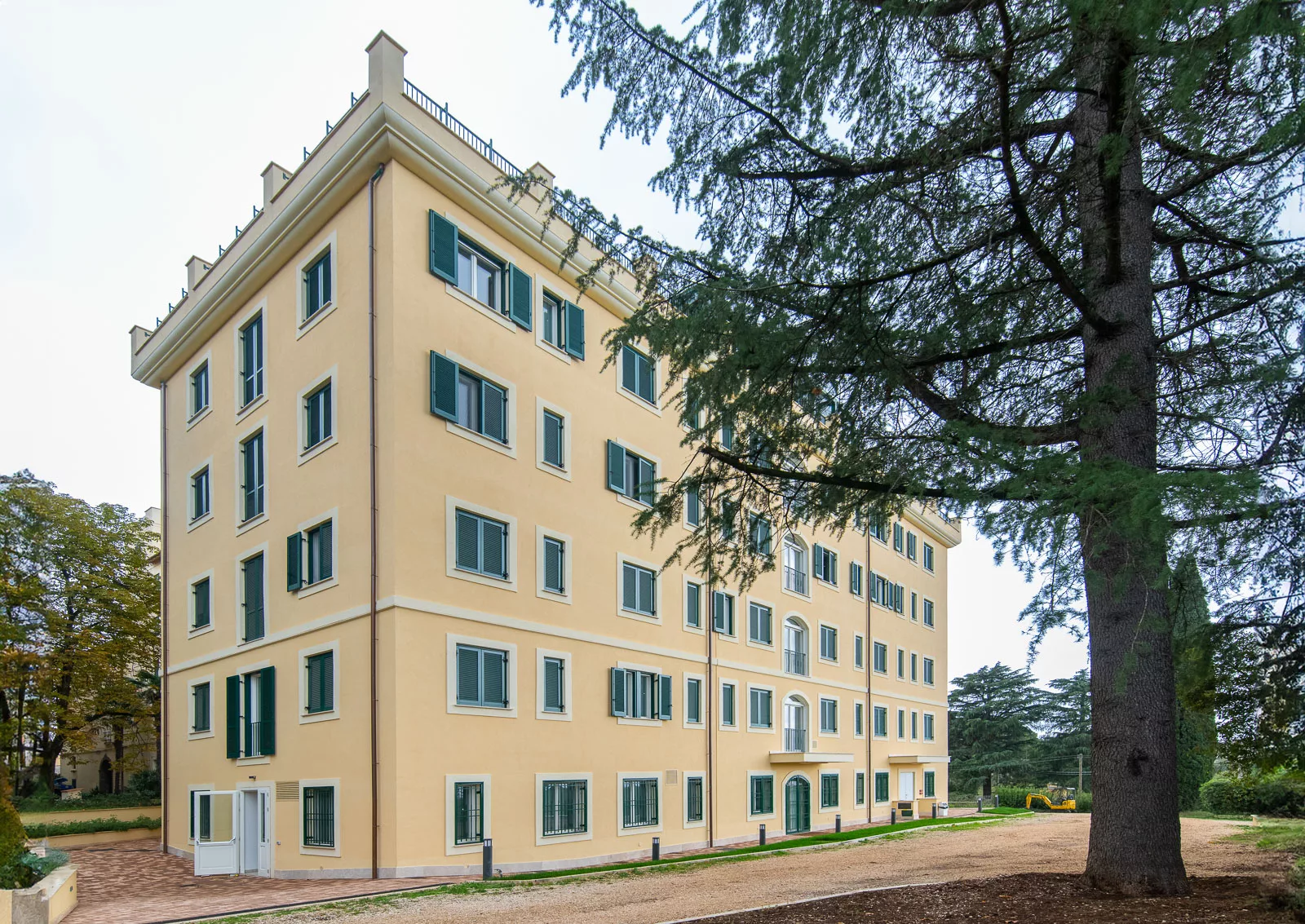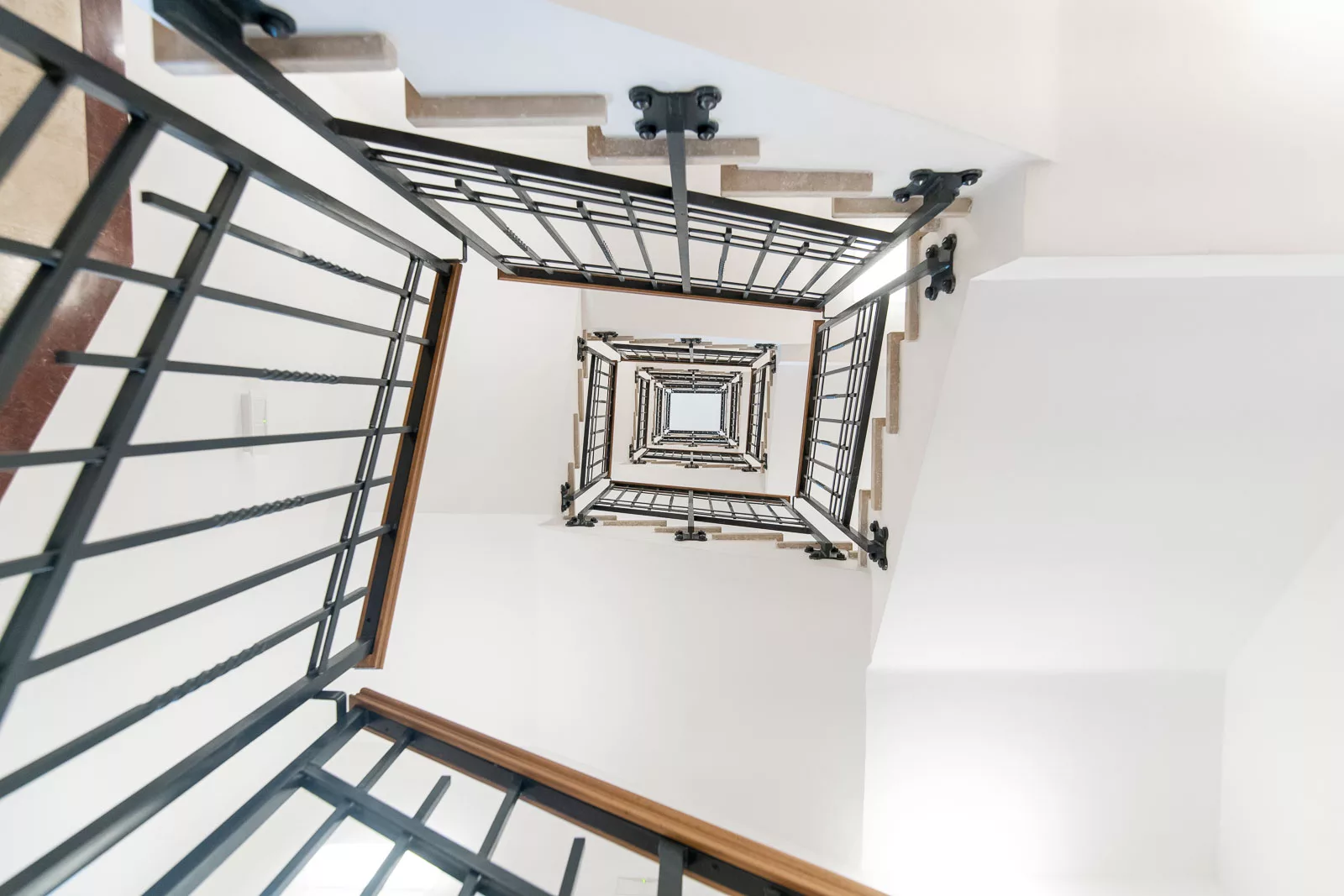The “Neubau” of San Pastore in Gallicano, Lazio
Renovation with demolition and reconstruction of a modern “vacation home”
2019 – 2021
OVERVIEW
Implementation of the renovation works with demolition and reconstruction of the complex called “Neubau”
CLINET
Pontifical Germanic-Hungarian College
COST
€ 3.179.734,85
LOCATION
Gallicano in Lazio
DIRECTOR OF WORK
Arch. Tommaso Scafi
PROJECT DESCRIPTION
Edilerica’s intervention at the San Pastore estate of the Germanic and Hungarian Pontifical College, located in the Roman countryside of Gallicano in Lazio, consisted of a renovation with demolition and reconstruction of a Jesuit accommodation facility.
Taking a cue from large luxury hotels, the new property built by the Edilerica team is spread over 5 floors with 11 rooms on each level, 1 restaurant, 1 conference room, and a large rooftop terrace that allows visitors to admire the beauty of the surrounding nature.
The main objective pursued during the development of the entire project, based on the client’s specifications, was to ensuresound insulation of the building in order to provide the estate’s guests with a peaceful and quiet stay. To achieve this, Edilerica arranged for the placement of partitions made of sound-absorbing and sound-insulating materials, and the installation of triple glazing for the windows.
As a whole, the operation required the handling of more than 12,000 square meters of slabs, which were used to raise a structure assembled exclusively using dry construction techniques. The choice of this technique, which prefers the use of assembled slabs rather than bricks joined together by wet lime, allowed a reduction in processing time without affecting thermal and acoustic insulation performance.
Lastly, it was decided to opt for the latest information technology in terms of plant engineering in order to make the accommodation facility smarter in its interior and exterior management activities. These technologies involve room monitoring, air conditioning, fire detection, and access to all rooms via badge.
Inside St. Shepherd’s, after carrying out the work on the “Neubau” building, the Edilerica company was commissioned to restore the facades facing the main entrance to the complex totaling about 1350sqm, which made the view visually more valuable to the visitor.

The dogs of Gallicano
Right on the balcony facing the main entrance to the Complex, there were two large marble dogs reduced to 4 or 5 pieces each. The marble showed obvious signs of prolonged exposure to weathering, so the surface was strewn with microorganisms that hid its original color.
It was thus decided to proceed with an attempt at restoration, first by compresses of biocide solution and later with monocarbonate and hydrogen peroxide. The compresses were performed with paper pulp applied for times ranging from a few hours to a full day depending on the case. Already after the first few wraps, a white marble of excellent quality has re-emerged.
The pieces were thenpivoted by bonding with resins and subsequent grouting with marble powder and hydraulic lime of the missing parts. Lastly, a layer of water repellent was applied to protect against weathering.
The two marble dogs, perfectly restored, were then relocated to their original position.
St. Shepherd’s “Neubau”
A place of peace, prayer and meditation. But also a functional building with technical and energy performance comparable to that of a luxury hotel. This and much more is intended to be the new building desired by the Germanic and Hungarian Pontifical College, which has retained the name “Neubau ” (from the German “new building“) by which the structure was referred to in the 1920s.
Following lengthy evaluation, the client’s choice fell on a renovation with complete demolition and reconstruction of the estate within the same area. The reason for this is to be found in the possibility of having a place designed and built according to modern standards in the management of both indoor and outdoor spaces, where guests of the facility can be offered a quiet and peaceful stay without suffering the typical limitations of a palace with a century of history.

Photo reportage

